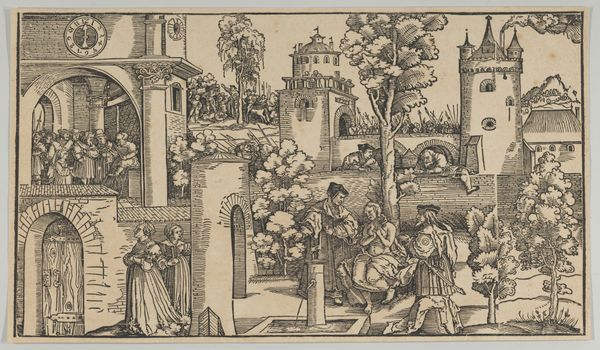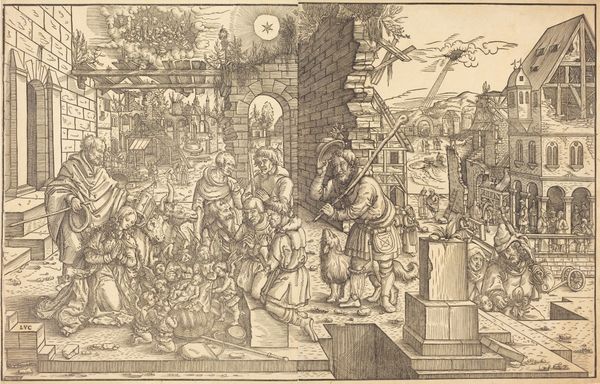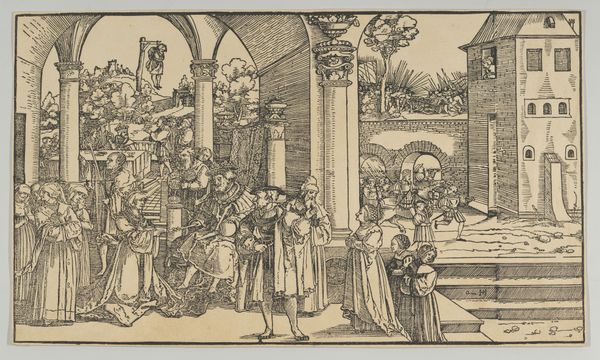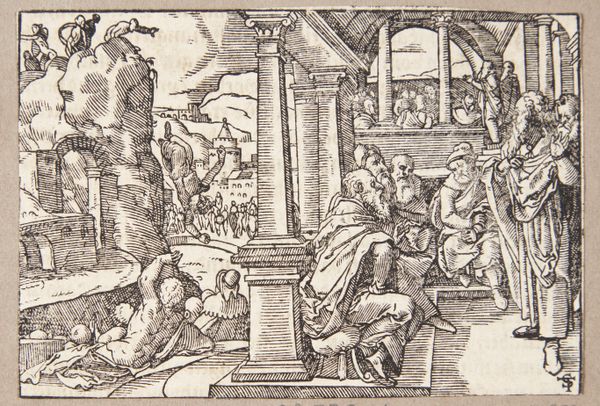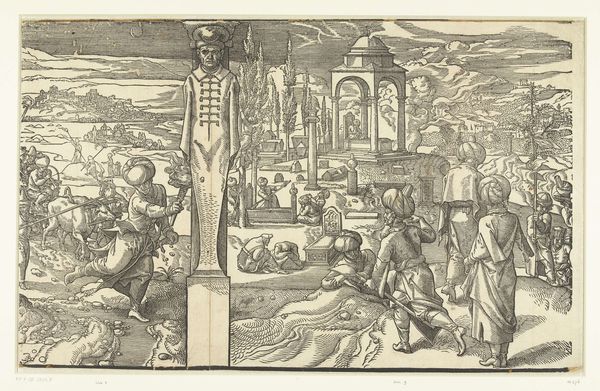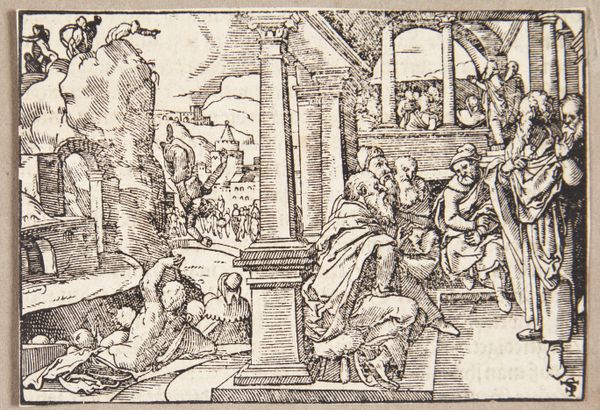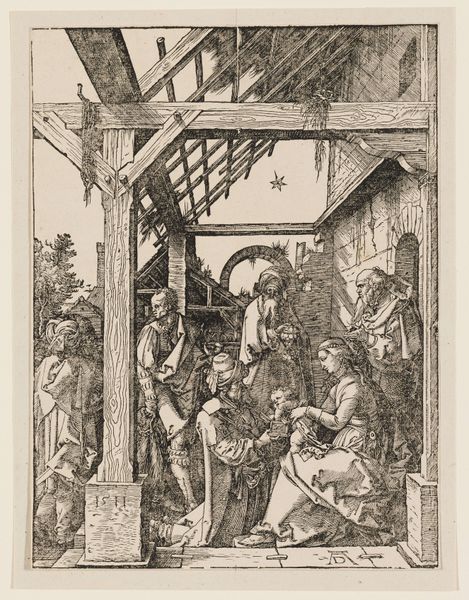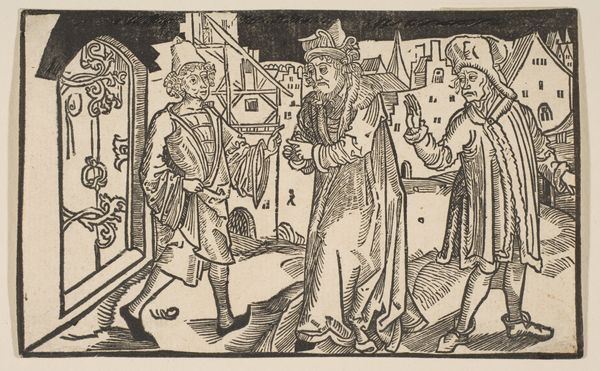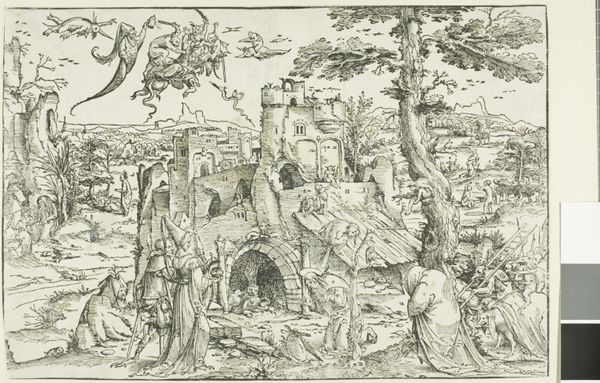
print, woodcut
#
ink drawing
#
narrative-art
# print
#
landscape
#
figuration
#
woodcut
#
genre-painting
#
northern-renaissance
Dimensions: 8 3/16 x 13 7/8 in. (20.8 x 35.24 cm) (image)
Copyright: Public Domain
Curator: Today we're looking at "Susanna and the Elders," a woodcut created in 1536 by Hans Schäufelein. Editor: My first impression is how remarkably detailed it is for a woodcut. It feels dense, almost claustrophobic, with activity crammed into every corner. Curator: Precisely! Let’s deconstruct the composition. We observe a triptych-like structure. On the left, Susanna exits a building; in the center, the primary scene unfolds with Susanna by the fountain; and the right depicts the men with weapons at hand, echoing similar depictions above these primary elements. Editor: It is busy. What is fascinating to me are all the symbols relating to Justice and Morality that seem to play out across the entirety of the scene. There are multiple symbolic structures occurring across the art's planes. Susanna is at the fountain—an archetype of purity—but what's occurring to her in this scenario? Curator: Schäufelein’s genius lies in creating distinct pictorial zones while employing compositional repetitions across the design, unified through line and texture. Editor: Exactly, the architecture is remarkable because Schäufelein's repetition reinforces how societies entrap and contain people both physically and morally. It seems to mirror how people become symbols for moral stories as we are pushed to create our allegories. Curator: Furthermore, this creates a fascinating dialogue between interior and exterior space. We glimpse the legal proceeding inside, a literal rendering of judgment, while the fountain scene transpires outdoors. Note the clock tower; perhaps emphasizing time is of the essence. Editor: It suggests how power functions, visible yet simultaneously concealed. Susanna represents a figure caught between these forces of power as if time is not hers but for them to control. A potent statement about societal and individual fate. Curator: And within the constraints of the woodcut medium, the execution displays an admirable mastery of tone and detail. Editor: A morally potent image, beautifully illustrating a clash of public virtue versus hidden desire and power. A brilliant work. Curator: Indeed. Its power resides in its skillful use of form and narrative structure, compelling us to question.
Comments
minneapolisinstituteofart almost 2 years ago
⋮
Using drawing skills honed in Albrecht Dürer's workshop, Hans Schäufelein focused on justice for Susanna. Prompted by God, Daniel asks each elder separately under which tree she committed her alleged adultery. When they gave differing answers, their lie was exposed. Schäufelein compressed the narrative to include, clockwise from back right: the elders entering the garden, Daniel questioning Susanna, her maids, the courtroom, and the elders being put to death.
Join the conversation
Join millions of artists and users on Artera today and experience the ultimate creative platform.
